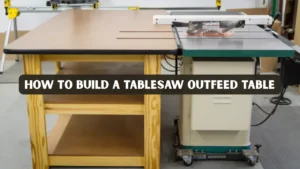Key Takeaways
- You will learn how to make a hexagon box step by step on a wood lathe.
- The article covers all essential tools, materials, safety guidelines, and turning techniques.
- You will understand how to design, turn, hollow, and finish a box with precision.
- You will get expert tips, common mistakes to avoid, and real-world examples from experienced turners.
Why You Should Consider Making a Hexagon Box on a Lathe
Making a hexagon box is a deeply satisfying woodworking project. It is not only decorative but also functional. When you learn how to make one on a lathe, you improve your skills in geometry, precision measuring, turning technique, and finishing. Such a box looks elegant and showcases craftsmanship, because the six sides create a striking visual effect that a round box cannot match.
Beyond aesthetics, turning this type of box challenges you to master the lathe in new ways: you must carefully shape the corners, maintain consistency in wall thickness, and precisely fit the lid. These skills translate to other turning projects as you grow in experience.
Moreover, this is a project that helps you build authority and trust among fellow woodturners. Sharing your guide or photos can demonstrate your expertise and attention to detail in the woodworking community.
Tools and Materials You Will Need
Materials
- A hardwood blank (maple, walnut, cherry, or other stable hardwood)
- Wood glue (especially if you plan to do segmented work)
- Sandpaper (grits from 120 up to 600 or higher)
- Wood finishing product (e.g., Danish oil, wax, or another sealant)
Tools
- A wood lathe (with adjustable speed)
- Lathe tools: spindle gouge, bowl gouge (if hollowing), parting tool, skew chisel
- Calipers or a precision ruler for measurement
- Clamps to hold blanks securely
- Safety gear: face shield or goggles, dust mask or respirator, hearing protection
Critical Safety Guidelines Before You Start
Safety in woodturning is non-negotiable. When you decide to make a hexagon box on a lathe, you must follow recommended safety practices.
- Personal protective equipment (PPE): Use a full face shield when turning, plus a respirator to protect from fine dust, and hearing protection during prolonged work.
- Inspect your lathe and tools: Before turning, make sure your lathe is in good repair. Check for wear in the headstock, tailstock, and toolrest.
- Secure your workpiece: Use proper clamping and fasteners to make sure your wood blank is tightly mounted. Loose pieces can be dangerous.
- Tool maintenance: Keep your chisels sharp. Dull tools are more dangerous and can catch or dig in.
- Remove adjusting tools: Always remove the chuck key, allen keys, or wrenches from the lathe before starting it.
- Work environment: Maintain a clean, well-lit, and well-ventilated shop. Eliminate tripping hazards, and never leave the lathe running unattended.
These safety precautions not only protect you, but they also enhance the quality of your turning by reducing risk of vibration, misalignment, or accidents.
Designing Your Box
To make a beautifully balanced piece, good design is critical. Here is how to approach the design phase:
- Set your dimensions: Decide on overall height, width, and wall thickness. Think about how deep the piece will be and how tall you want the lid.
- Create a hexagon template: Use paper or cardboard to draw a perfect hexagon. This helps you plan your cuts and layout.
- Choose your style: Will you use a solid blank or a segmented design? A segmented build allows you to glue multiple pieces together but requires additional planning.
- Plan the lid: Decide if your lid will overhang, sit flush, or have a decorative lip. Also think about how to secure it using a tenon, friction fit, or a small dovetail.
Taking time in the design stage ensures that when you begin turning, you know exactly what shape you are aiming for.
Step‑by‑Step Process
Here is a detailed, practical guide for turning a hexagon box on a lathe.
1. Prepare the Wood Blank
- Cut your wood blank slightly larger than the final desired dimension to give room for trimming and shaping.
- Mark the blank’s center so you can mount it precisely. Use a center finder or a ruler.
- Secure it to the lathe using either a faceplate or a chuck, depending on your lathe type.
2. Rough-turn the Blank
- Turn on the lathe at a low speed. Begin by roughing out a cylinder. This gives you a stable, round shape to work from.
- Use a spindle gouge or roughing gouge. Take light cuts and don’t rush. Let the tool do the work.
- Make sure your toolrest is close to the work and set at a safe height.
3. Shape the Hexagon Exterior
- Once you have a clean cylinder, you can begin shaping the hexagon.
- Carefully mark out six equal facets on the cylinder using a pencil and your calipers or measuring tool.
- With a skew or gouge, gently remove wood to form the six flat faces. Work slowly, checking symmetry often.
- Use calipers or a ruler to verify that each side is even in width and that all corners are consistent.
4. Hollow the Inside
- Switch to a bowl or spindle gouge, depending on your box size.
- Begin hollowing at a low speed. Take shallow cuts to maintain control and reduce risk.
- Monitor and measure the wall thickness as you hollow to make sure it stays even. Uneven walls can weaken the box or ruin the lid’s fit.
- Periodically stop and inspect: this part requires patience and care.
5. Turn the Lid
- After hollowing the body, mount a separate blank (or the same piece, using a reverse chuck) to turn the lid.
- Shape the lid to mirror the hexagon’s exterior. Pay attention to the corners and angles so that they match.
- Create a lip or tenon so the lid fits snugly into the box. Test often.
- Also consider adding a small decorative recess or overhang for better handling.
6. Fine-Tune and Fit the Lid
- Once both parts are roughly shaped, test how well the lid fits.
- If the fit is too tight, carefully pare away with a small gouge or scraper. If too loose, consider adding a friction tenon or a small ring of glue (if you don’t need it removable).
- Get the fit just right: not too loose, not too stiff.
7. Sanding and Final Finishing
- Sand the inside and the outside of both box and lid. Start with 120 grit, then progress to 220, 400, up to 600 or more for a silky finish.
- Use a sanding jig or a paper holder so you do not wrap abrasive directly around your fingers; safer and more uniform.
- Apply your finish: Danish oil, wax, or another finish of your choice. Let the first coat soak in, then apply subsequent coatings, sanding lightly in between for a smooth result.
- Allow proper drying time. Multiple thin coats are better than one thick coat.
Expert Tips
- Always measure twice: To achieve even facets, check your measurements regularly with calipers or a ruler.
- Keep your tools sharp: Sharp chisels make cleaner cuts, reduce tear-out, and improve safety.
- Practice your hollowing technique on scrap wood before working on your main blank.
- Use light cuts when shaping and hollowing; aggressive cuts can cause chatter, tear-out, or even tool catches.
- Check alignment often: As you turn, frequently stop the lathe and check how the facets are forming, how the lid fits, and how the wall thickness is changing.
- When applying finish, work in a dust-free space and avoid wrapping cloths around the piece when polishing, loose cloth can catch.
Common Pitfalls and How to Avoid Them
Making a box can be tricky. Here are common mistakes and how to avoid them:
- Uneven faces: If you do not measure and mark accurately, your six facets may be inconsistent. Solution: use a precise layout tool and recheck frequently.
- Thin or weak walls: While hollowing, you might cut too deeply. Always measure wall thickness and leave a bit of extra material until final sanding.
- Poor lid fit: Without constant test-fitting, your lid might be too tight or too loose. Remedy: cut carefully, test fit, and make small adjustments.
- Splintering or catches: These can happen if your tools are dull or if you take deep cuts. Use sharp tools and shallow passes.
- Inadequate safety: Neglecting PPE, loose tool rests, or cluttered workspace can cause serious accidents. Always follow safety protocols.
Real‑World Example
Consider a hobbyist named Sarah, who shared her journey: she decided to turn a hexagon wooden box for her mother’s birthday. She chose a beautiful piece of cherry wood, rough-turned it into a cylinder, and carefully marked her six faces using a template. She practiced hollowing on scrap wood first, which helped her avoid major mistakes when working on the real piece.
When Sarah hollowed out the interior, she used light cuts and frequently measured wall thickness to maintain strength. For the lid, she reversed the blank on the chuck, turned matching facets, and formed a tight-fitting tenon. After sanding through grits and applying a mix of wax and oil, her final box had a warm sheen, smooth edges, and a snug lid fit.
Conclusion
Turning a hexagon box on a lathe is a rewarding project that demands precision, patience, and care. By following the steps outlined here from design and preparation to safe turning, hollowing, sanding, and finishing; you can create a beautiful, functional piece that reflects your craftsmanship.
You now have a complete roadmap for making a box on a lathe, backed by expert safety protocols and real-world experience. With careful work, sharp tools, and a clear plan, you can achieve a professional result that is both elegant and sturdy.
Gather your tools, select your wood, and start turning your own box today. The results will be a testament to your woodturning skill and patience.
FAQs
Can a beginner learn how to make a hexagon wooden box on a lathe?
Yes, a beginner can absolutely learn. Start with scrap wood, take light cuts, and practice hollowing techniques. Over time you will build confidence, precision, and skill.
What wood species work best for a hexagon gift box?
Hardwoods such as maple, walnut, cherry, or oak are ideal. These woods are stable and finish beautifully, and they resist cracks or warping, making them perfect for delicate box turning.
How long does it typically take to turn a box?
Depending on the complexity, turning time can vary. A simple box might take around 3 to 5 hours including turning, sanding, and finishing. A segmented or more decorative box can take significantly longer.
What are the most important safety practices when turning a box?
Key practices include using a face shield, respirator, and hearing protection; inspecting the lathe and tools; securing the workpiece; removing the chuck key; and working in a clean, well-lit space.
Can I make a hexagon jewelery box without a lathe?
You can, but it is much harder. Without a lathe, you need very accurate miter cuts, joinery skills, and precise sanding to achieve the six equal faces. A lathe simplifies shaping, hollowing, and finishing.




